Latest Posts by rtbamapride98 - Page 5


My life in a gif
Pirates of the Caribbean spoilers!!!!
I really think that Hector Barbosa is dead (even though I don’t like it). He’s death was so sad but at the same time meaningful it just made me cry. I also loved the fact that he was a father, only for some hours though. The main reason that I think he is dead is because of Jack’s line when he says “I have a reunion beyond the horizon” or something like that. I think he’s going to look for Hector just like everyone looked for him in the third movie

Pirates of the Caribbean spoilers!!!!
I really think that Hector Barbosa is dead (even though I don’t like it). He’s death was so sad but at the same time meaningful it just made me cry. I also loved the fact that he was a father, only for some hours though. The main reason that I think he is dead is because of Jack’s line when he says “I have a reunion beyond the horizon” or something like that. I think he’s going to look for Hector just like everyone looked for him in the third movie

How many pieces of eight do I need to convince somebody to resurrect Captain Barbossa?




Pirates of the Caribbean: At World’s End → Favorite Moments (1/?)
Going through all the Alice x Tarrant fanfiction like

And then coming across those choice M-Rated fics.












Some Mad Hatter.
and Johnny >3.
I have this weird feeling that captain Barbosa would make excellent motivational speeches for shippers, I mean like could you imagine? Your ship’s seen better days, tptb have decided to play all their cards and free Calypso in an attempt to sink it, or you’re just sailing aimlessly with no hope of reaching canon-island. And then Barbosa is all like “ships be the symbol of freedom to do whatever the hell a shipper fancies”, “every ship has a cannon, and if it doesn’t - then what arrr you doing!?” and “as long as there be the sea beneath your boots, the wind in your beard, and the tide in your blood then a ship will always sail straight and true.”
“A shipper is their own captain, and the captain of that ship sails by no law but their own.”

Soundtrack for writers
Writing without music kind of gets me stuck. I don’t know what happens, I feel incomplete. The wrong type of music, however, throws me off. If, just like me, music is an important part of your writing process, this is the post for you.
Sound effects websites:
Rainy Mood
Shower Time
Coffitivity
Soundrown
Noisli
Rainy Cafe
A Soft Murmur
Snowy Mood
Sound effects on YT:
- Journey
Night train
Night train with rain
Car ride
Car ride with rain
Airplane cabin
Pirate ship
Pirate ship with rain
Spaceship
- Nature
Garden
Swamp
Rainforest
Snow storm
Snow storm with fireplace
Winter wind
Winter waterfall
Beach
River
Desert with wind
Field
Underwater
Haunting storm
Cave water
- Places and events
Airport
Restaurant
City
Train station
Shopping mall
School
Convention center
Call center office
Fireworks
Classical music:
Liszt
Handel
Villa-Lobos
Mahler
Mussorgsky
Paganini
Clara Schumann
Robert Schumann
Haydn
G.P. da Palestrina
Rossini
Verdi
Chopin
Takemitsu
Salieri
Elgar
Debussy
Gershwin
Satie
Soundtracks:
Ghibli
Lord of the Rings
Skyrim
Pirates of the Caribbean
Harry Potter
Naruto and Naruto (villains)
Journey
Disney
Star Wars
The Terminator
The Last of Us
Cowboy Bebop
The Ring
Edward Scissorhands
Sleepy hollow
The Village
Until Dawn
Layers of Fear
Outlander
Downton Abbey
This War of Mine
Hunter x Hunter
Pride and Prejudice
Clannad
Marco Polo
House of the Flying Daggers
Baccano!
Somewhere in time
The Order
The Notebook
Final Fantasy X
Final Fantasy XIII
Van Helsing
Anno 1404
Jurassic Park
Lost
Titanic
The Last of the Mohicans
One Piece

At the end of every year, the team at Writers Write looks at which posts were viewed most over the previous 12 months. This year, however, we were curious to find out which of our writing posts were the most popular of all time.
So we decided to start 2017 with the 25 posts you’ve viewed most on our blog over the past five years. (The number of views indicated here are from 31 December 2016.)
Our top post has almost 2 million views, and we’ve seen it used in varying formats across the internet. The second and third posts have more than 1 million views combined.
The posts vary. They include reference sheets for writers, longer posts on grammar and creative writing, a selection of excerpts from poetry, business writing tips, writing prompts, and quotations. We hope you enjoy them.
Our Top 25 Writing Posts Of All Time
1. 45 Ways To Avoid Using The Word ‘Very’
2. Cheat Sheets For Writing Body Language
3. 155 Words To Describe An Author’s Tone
4. Synonyms for 95 Commonly Used Words - A Mini-Thesaurus for Writers
5. 123 Ideas For Character Flaws
6. Persuasive Writing - Emotional vs Intellectual Words
7. The Daily Word Counts of 39 Famous Authors
8. 17 Of The Most Powerful Excerpts From Poetry
9. 15 Questions Authors Should Ask Characters
10. The 12 Common Character Archetypes
11. 350 Character Traits - A Fabulous Resource for Writers
12. 209 Words To Describe Touch
13. Body Language Reference Sheet
14. 20 Myths To Use As Writing Prompts
15. Eight Commonly Misused Words
16. 37 Ways To Write About Anger
17. 30 Examples To Help You Master Concord
18. Psychopath Or Sociopath - What’s The Difference?
19. The 5 Elements Of A Story
20. 16 Types of Government - A Writer’s Resource
21. 5 Incredibly Simple Ways To Help Writers Show And Not Tell
22. 6 Sub-Plots That Add Style To Your Story
23. Write Your Novel In A Year - Week 35: 3 Must-Have Scenes That Reveal Character
24. The Top 12 Literary Love Quotes
25. Show! Don’t tell. - 10 Verbs That Make You Tell
~~~
The posts were mostly written by Amanda Patterson, Mia Botha, Anthony Ehlers, and Donna Radley. Thank you for your brilliant contributions.
Soundtrack for writers
Writing without music kind of gets me stuck. I don’t know what happens, I feel incomplete. The wrong type of music, however, throws me off. If, just like me, music is an important part of your writing process, this is the post for you.
Sound effects websites:
Rainy Mood
Shower Time
Coffitivity
Soundrown
Noisli
Rainy Cafe
A Soft Murmur
Snowy Mood
Sound effects on YT:
- Journey
Night train
Night train with rain
Car ride
Car ride with rain
Airplane cabin
Pirate ship
Pirate ship with rain
Spaceship
- Nature
Garden
Swamp
Rainforest
Snow storm
Snow storm with fireplace
Winter wind
Winter waterfall
Beach
River
Desert with wind
Field
Underwater
Haunting storm
Cave water
- Places and events
Airport
Restaurant
City
Train station
Shopping mall
School
Convention center
Call center office
Fireworks
Classical music:
Liszt
Handel
Villa-Lobos
Mahler
Mussorgsky
Paganini
Clara Schumann
Robert Schumann
Haydn
G.P. da Palestrina
Rossini
Verdi
Chopin
Takemitsu
Salieri
Elgar
Debussy
Gershwin
Satie
Soundtracks:
Ghibli
Lord of the Rings
Skyrim
Pirates of the Caribbean
Harry Potter
Naruto and Naruto (villains)
Journey
Disney
Star Wars
The Terminator
The Last of Us
Cowboy Bebop
The Ring
Edward Scissorhands
Sleepy hollow
The Village
Until Dawn
Layers of Fear
Outlander
Downton Abbey
This War of Mine
Hunter x Hunter
Pride and Prejudice
Clannad
Marco Polo
House of the Flying Daggers
Baccano!
Somewhere in time
The Order
The Notebook
Final Fantasy X
Final Fantasy XIII
Van Helsing
Anno 1404
Jurassic Park
Lost
Titanic
The Last of the Mohicans
One Piece
Dialogue Breakdown
Dialogue is an important part of storytelling. While I’m not perfect by any means, I definitely consider this to be my strength when it comes to writing. So hopefully I can shed some light on this subject and help those that want to improve their dialogue in some capacity.
Internalized thoughts:
I consider internalized thoughts dialogue said to oneself. Which is why I’m going to talk about it here.
I like to use dialogue for characterization, mostly. Since it really won’t move the story forward (since the character is only thinking it to themselves), I find it helps to create juxtaposition between what is said and thought.
Examples of how to use what is said vs. what is thought to create drama
Character is quiet or seems that way, and thinks a LOT more than what they say
A character is a liar, so they may say one thing, but we don’t know it’s a lie until they think it
A character is trying to examine someone or something else silently
A mute character
A character that reads minds—can be challenging but fun to write
Speech:
Speech and creating personality:
Think about the way someone speaks: accents, if they use curse words, if they’re always “proper” or always using slang
Think about what they say vs. what they won’t. Are they falsely sweet? Always challenging someone?
Having one character have a saying they always use is a fun way to build personality. For instance, Ron in the Harry Potter books always saying “Bloody hell”. You can come up with your own creative “curse words” that aren’t actually curse words. That will definitely up the personality of the writing and characters.
Advice for writing dialogue
If you have trouble varying the speech between characters, I’d suggest 1. Listening to people around you and what they say and how. 2. To practice.
Think about various emotions and how that can change the tone, words chosen, etc. Speech and dialogue will really speed up scenes. So if you feel like a chapter is paced a little bit too slowly, adding some dialogue between characters will speed it up.
If you’re stronger at description and find you never add enough dialogue, look through your piece and think about various areas that could be changed to dialogue instead of description OR scenes that could have a small but interesting conversation.
On the same note, sometimes it’s easier to describe a conversation than write it all out.
For example, conversations that happened in the past that someone is describing, conversations that perhaps are important to know happened in general but not in detail, etc.
You don’t always have to write out the FULL conversation. A good example of this is phone conversations. Writing out all the pleasantries (greetings and polite “how are you”s) really aren’t necessary. Get the main “point” of the conversation. I.e. why it is important for the reader to know.
Not every line of dialogue needs a dialogue tag (i.e. “she said”). If it’s between two people, and they’re really going at it (because they’re angry or they’re playfully bantering or something), the dialogue tags become unnecessary and honestly bog down the quick flow. Just clue the readers every few lines or so.
Read your conversations out loud! Does anything sound awkward or unnatural? Hearing it will help clue you into those areas that could be changed or revised.
Happy to answer any questions. Happy Writing!

Writing with Color: Description Guide - Words for Skin Tone
We discussed the issues describing People of Color by means of food in Part I of this guide, which brought rise to even more questions, mostly along the lines of “So, if food’s not an option, what can I use?” Well, I was just getting to that!
This final portion focuses on describing skin tone, with photo and passage examples provided throughout. I hope to cover everything from the use of straight-forward description to the more creatively-inclined, keeping in mind the questions we’ve received on this topic.
So let’s get to it.
S T A N D A R D D E S C R I P T I O N
B a s i c C o l o r s

Pictured above: Black, Brown, Beige, White, Pink.
“She had brown skin.”
This is a perfectly fine description that, while not providing the most detail, works well and will never become cliché.
Describing characters’ skin as simply brown or beige works on its own, though it’s not particularly telling just from the range in brown alone.
C o m p l e x C o l o r s
These are more rarely used words that actually “mean” their color. Some of these have multiple meanings, so you’ll want to look into those to determine what other associations a word might have.

Pictured above: Umber, Sepia, Ochre, Russet, Terra-cotta, Gold, Tawny, Taupe, Khaki, Fawn.
Complex colors work well alone, though often pair well with a basic color in regards to narrowing down shade/tone.
For example: Golden brown, russet brown, tawny beige…
As some of these are on the “rare” side, sliding in a definition of the word within the sentence itself may help readers who are unfamiliar with the term visualize the color without seeking a dictionary.
“He was tall and slim, his skin a russet, reddish-brown.”
Comparisons to familiar colors or visuals are also helpful:
“His skin was an ochre color, much like the mellow-brown light that bathed the forest.”
M o d i f i e r s
Modifiers, often adjectives, make partial changes to a word.The following words are descriptors in reference to skin tone.
D a r k - D e e p - R i c h - C o o l
W a r m - M e d i u m - T a n
F a i r - L i g h t - P a l e
Rich Black, Dark brown, Warm beige, Pale pink…
If you’re looking to get more specific than “brown,” modifiers narrow down shade further.
Keep in mind that these modifiers are not exactly colors.
As an already brown-skinned person, I get tan from a lot of sun and resultingly become a darker, deeper brown. I turn a pale, more yellow-brown in the winter.
While best used in combination with a color, I suppose words like “tan” “fair” and “light” do work alone; just note that tan is less likely to be taken for “naturally tan” and much more likely a tanned White person.
Calling someone “dark” as description on its own is offensive to some and also ambiguous. (See: Describing Skin as Dark)
U n d e r t o n e s
Undertones are the colors beneath the skin, seeing as skin isn’t just one even color but has more subdued tones within the dominating palette.

Mentioning the undertones within a character’s skin is an even more precise way to denote skin tone.
As shown, there’s a difference between say, brown skin with warm orange-red undertones (Kelly Rowland) and brown skin with cool, jewel undertones (Rutina Wesley).
“A dazzling smile revealed the bronze glow at her cheeks.”
“He always looked as if he’d ran a mile, a constant tinge of pink under his tawny skin.”
Standard Description Passage
“Farah’s skin, always fawn, had burned and freckled under the summer’s sun. Even at the cusp of autumn, an uneven tan clung to her skin like burrs. So unlike the smooth, red-brown ochre of her mother, which the sun had richened to a blessing.”
-From my story “Where Summer Ends” featured in Strange Little Girls
Here the state of skin also gives insight on character.
Note my use of “fawn” in regards to multiple meaning and association. While fawn is a color, it’s also a small, timid deer, which describes this very traumatized character of mine perfectly.
Though I use standard descriptions of skin tone more in my writing, at the same time I’m no stranger to creative descriptions, and do enjoy the occasional artsy detail of a character.
C R E A T I V E D E S C R I P T I O N
Whether compared to night-cast rivers or day’s first light…I actually enjoy seeing Characters of Colors dressed in artful detail.
I’ve read loads of descriptions in my day of white characters and their “smooth rose-tinged ivory skin”, while the PoC, if there, are reduced to something from a candy bowl or a Starbucks drink, so to actually read of PoC described in lavish detail can be somewhat of a treat.
Still, be mindful when you get creative with your character descriptions. Too many frills can become purple-prose-like, so do what feels right for your writing when and where. Not every character or scene warrants a creative description, either. Especially if they’re not even a secondary character.
Using a combination of color descriptions from standard to creative is probably a better method than straight creative. But again, do what’s good for your tale.
N A T U R AL S E T T I N G S - S K Y

Pictured above: Harvest Moon -Twilight, Fall/Autumn Leaves, Clay, Desert/Sahara, Sunlight - Sunrise - Sunset - Afterglow - Dawn- Day- Daybreak, Field - Prairie - Wheat, Mountain/Cliff, Beach/Sand/Straw/Hay.
Now before you run off to compare your heroine’s skin to the harvest moon or a cliff side, think about the associations to your words.
When I think cliff, I think of jagged, perilous, rough. I hear sand and picture grainy, yet smooth. Calm. mellow.
So consider your character and what you see fit to compare them to.
Also consider whose perspective you’re describing them from. Someone describing a person they revere or admire may have a more pleasant, loftier description than someone who can’t stand the person.
“Her face was like the fire-gold glow of dawn, lifting my gaze, drawing me in.”
“She had a sandy complexion, smooth and tawny.”
Even creative descriptions tend to draw help from your standard words.
F L O W E R S

Pictured above: Calla lilies, Western Coneflower, Hazel Fay, Hibiscus, Freesia, Rose
It was a bit difficult to find flowers to my liking that didn’t have a 20 character name or wasn’t called something like “chocolate silk” so these are the finalists.
You’ll definitely want to avoid purple-prose here.
Also be aware of flowers that most might’ve never heard of. Roses are easy, as most know the look and coloring(s) of this plant. But Western coneflowers? Calla lilies? Maybe not so much.
“He entered the cottage in a huff, cheeks a blushing brown like the flowers Nana planted right under my window. Hazel Fay she called them, was it?”
A S S O R T E D P L A N T S & N A T U R E

Pictured above: Cattails, Seashell, Driftwood, Pinecone, Acorn, Amber
These ones are kinda odd. Perhaps because I’ve never seen these in comparison to skin tone, With the exception of amber.
At least they’re common enough that most may have an idea what you’re talking about at the mention of “pinecone.“
I suggest reading out your sentences aloud to get a better feel of how it’ll sounds.
“Auburn hair swept past pointed ears, set around a face like an acorn both in shape and shade.”
I pictured some tree-dwelling being or person from a fantasy world in this example, which makes the comparison more appropriate.
I don’t suggest using a comparison just “cuz you can” but actually being thoughtful about what you’re comparing your character to and how it applies to your character and/or setting.
W O O D

Pictured above: Mahogany, Walnut, Chestnut, Golden Oak, Ash
Wood can be an iffy description for skin tone. Not only due to several of them having “foody” terminology within their names, but again, associations.
Some people would prefer not to compare/be compared to wood at all, so get opinions, try it aloud, and make sure it’s appropriate to the character if you do use it.
“The old warlock’s skin was a deep shade of mahogany, his stare serious and firm as it held mine.”
M E T A L S

Pictured above: Platinum, Copper, Brass, Gold, Bronze
Copper skin, brass-colored skin, golden skin…
I’ve even heard variations of these used before by comparison to an object of the same properties/coloring, such as penny for copper.
These also work well with modifiers.
“The dress of fine white silks popped against the deep bronze of her skin.”
G E M S T O N E S - M I N E R A LS

Pictured above: Onyx, Obsidian, Sard, Topaz, Carnelian, Smoky Quartz, Rutile, Pyrite, Citrine, Gypsum
These are trickier to use. As with some complex colors, the writer will have to get us to understand what most of these look like.
If you use these, or any more rare description, consider if it actually “fits” the book or scene.
Even if you’re able to get us to picture what “rutile” looks like, why are you using this description as opposed to something else? Have that answer for yourself.
“His skin reminded her of the topaz ring her father wore at his finger, a gleaming stone of brown, mellow facades.”
P H Y S I C A L D E S C R I P T I ON
Physical character description can be more than skin tone.
Show us hair, eyes, noses, mouth, hands…body posture, body shape, skin texture… though not necessarily all of those nor at once.
Describing features also helps indicate race, especially if your character has some traits common within the race they are, such as afro hair to a Black character.
How comprehensive you decide to get is up to you. I wouldn’t overdo it and get specific to every mole and birthmark. Noting defining characteristics is good, though, like slightly spaced front teeth, curls that stay flopping in their face, hands freckled with sunspots…
G E N E R A L T I P S
Indicate Race Early: I suggest indicators of race be made at the earliest convenience within the writing, with more hints threaded throughout here and there.
Get Creative On Your Own: Obviously, I couldn’t cover every proper color or comparison in which has been “approved” to use for your characters’ skin color, so it’s up to you to use discretion when seeking other ways and shades to describe skin tone.
Skin Color May Not Be Enough: Describing skin tone isn’t always enough to indicate someone’s ethnicity. As timeless cases with readers equating brown to “dark white” or something, more indicators of race may be needed.
Describe White characters and PoC Alike: You should describe the race and/or skin tone of your white characters just as you do your Characters of Color. If you don’t, you risk implying that White is the default human being and PoC are the “Other”).
PSA: Don’t use “Colored.” Based on some asks we’ve received using this word, I’d like to say that unless you or your character is a racist grandmama from the 1960s, do not call People of Color “colored” please.
Not Sure Where to Start? You really can’t go wrong using basic colors for your skin descriptions. It’s actually what many people prefer and works best for most writing. Personally, I tend to describe my characters using a combo of basic colors + modifiers, with mentions of undertones at times. I do like to veer into more creative descriptions on occasion.
Want some alternatives to “skin” or “skin color”? Try: Appearance, blend, blush, cast, coloring, complexion, flush, glow, hue, overtone, palette, pigmentation, rinse, shade, sheen, spectrum, tinge, tint, tone, undertone, value, wash.
Skin Tone Resources
List of Color Names
The Color Thesaurus
Things that are Brown (blog)
Skin Undertone & Color Matching
Tips and Words on Describing Skin
Photos: Undertones Described (Modifiers included)
Online Thesaurus (try colors, such as “red” & “brown”)
Don’t Call me Pastries: Creative Skin Tones w/ pics 3 2 1
Writing & Description Guides
WWC Guide: Words to Describe Hair
Writing with Color: Description & Skin Color Tags
Describing Characters of Color (Passage Examples)
7 Offensive Mistakes Well-intentioned Writers Make
I tried to be as comprehensive as possible with this guide, but if you have a question regarding describing skin color that hasn’t been answered within part I or II of this guide, or have more questions after reading this post, feel free to ask!
~ Mod Colette
Alright, attention writers
My friend had to format the disc and she accidently lost all her work, lists of characters, ideas and all that stuff
SO LISTEN TO ME NOW I DON’T WANT IT TO HAPPEN TO ANY OF YOU
I PRESENT TO YOU: EVERNOTE
YOU CAN DOWNLOAD IT FOR FREE
THIS APP WAS MADE TO HELP YOU ORGANISE YOUR NOTES - IDEAS, RECIPES, WRITING, LITERALLY EVERYTHING YOU WANT - ALL OF THESE ARE SAVED ON YOUR ONLINE ACCOUNT SO YOU WON’T LOSE IT. AND NOBODY ELSE HAS ACCESS TO IT EXCEPT YOU (UNLESS YOU WANT TO SHARE)
ok, so what else…
CHARAHUB HELPS YOU ORGANISE YOUR CHARACTERS
FAMILY ECHO HELPS YOU CREATE FAMILY TREES
TIKI TOKI HELPS YOU CREATE TIMELINES
I am using all of these myself and I can recommend it so please save your ideas online so they won’t disappear! I am sure all of your stories are worth saving! Take care! <3

Writing With Color – Featured Research Guides
Although WWC shares resources when we can and bring some to the table ourselves, we don’t exist to seek outside sources for one’s writing; this is ultimately the writer’s job. Even so, we’re more than happy to offer guidance on the What, Where and How of doing research for your inclusive writing.
Take a look at some of the research help & resources complied below:
Research
Research Sources
Blogs - Recs - Resources Page
WWC Tags and Help
Research
Resources
Writer Reference
Writer Resources
More Blog Recomendations
General Research
Interviewing POC for Research
Researching PoC and Supporting Writers of Color
Researching Racially/Ethnically Diverse Characters
Researching to write about others’ demographics or places
What To Look Out For Aside From Poor Research
Cultural and Religious Research
Anthropology as a Source for Cultural Data
Creating Cultures: Resources
Cultures and Religions Research
Non-Eurocentric Mythology Resources
Research of Cultural Magic
Respectful Research on Cultures
Historical Research
90s Points Of View: Researching (USA)
Black Hair, Culture and USA 1920’s
Diversity in Group-specific Historical Event
PoC Presence & Roles in History
Writing about a Civilization with Little Information
Writing Historical Fiction Respectfully
Fantasy Sci-Fi & Research
Racism in Future Settings
Researching PoC for Fantasy
Name Research/Resources
Borrowing Names from other Languages by Meaning
Finding reasonably culturally and historically accurate name
Names Selected from Different Cultures
Naming Characters After Deities And Spirits: Santeria As Example
Naming Non-European Locations
Naming people and places, avoiding coding and stereotypes
Pet Names for Characters of Color
Potentially Offensive Words as Character Names
Western Names + Characters of Color
Resources
Cultural and Religious Resources
Portraying African Cultures
Afro-Caribbean Religions: Voodoo, Santeria+ Research
Haitian Vodou and Louisiana Voodoo
Approaching Jain Temple for Research
Writing Secular American Jewish Characters
Indicating Muslim and/or Jewish Characters
Researching Native American Cultures
On Using Native American And Other Folklore
WWC Naming Resources/Guides
Black Names & Stereotypes
Chinese w/ Meanings for Names
Indian Muslim Names
Indian and other South Asian Names
Korean Naming Conventions
Korean Character Names in Fantasy
Korean Names: How to Romanize
Mexican Naming Patterns (Apellidos)
Naming Native American Characters
Non-Islamic Arabic Naming
Punjabi Indian-American Naming
Thai Last Names
–WWC
What sort of questions should I be asking my beta readers?
QUESTIONS TO ASK YOUR BETA READERS:

When I send out my chapter to be read over by my beta readers, I always include a set of questions typed out at the bottom, grouped into different categories such as: plot, pacing, character, setting, etc.
You might want to tailor the questions depending on the genre or which chapter it is. For example, if it’s the first chapter you’ll want to ask them about how well your story managed to hook them, or if they managed to easily get an idea of the world you’ve introduced them to. If it’s the climax you might want to ask if the action scenes are fluid, and if the plot twist/s were predictable or surprising.
Here’s some example questions that you could use:
Opening Chapter:
What is your first impression of the main character? Do you find them likable? Annoying? Boring?
After reading it for the first time, what is your first impression? Was it cohesive and compelling? Boring and confusing?
Did the first sentence/paragraph/page efficiently grab your attention and hook you in?
If you were to read this chapter in a bookstore/library would you be convinced to buy it? Or would you need to read further before deciding? Why or why not?
Did you get oriented fairly quickly at the beginning as to whose story it is, what’s going on, and where and when it’s taking place? If not, what were you confused about at the beginning?
Does the first chapter establish the main character efficiently? Do they feel believable?
Characters:
Could you clearly imagine what the characters looked like? If not, who?
Who was your favourite character and why? Has your favourite character changed? (if this hasn’t changed feel free to skip this question)
Are there any characters that you do not like? Why do you not like them? (Boring, annoying, problematic, etc.)
Was there ever a moment when you found yourself annoyed or frustrated by a character?
Could you relate to the main character? Did you empathise with their motivation or find yourself indifferent?
Were the characters goals/motivations clear and understandable?
Did you get confused about who’s who? Are there too many characters to keep track of? Are any of the names or characters too similar?
Do the characters feel three-dimensional or like cardboard cutouts?
How familiar have you become with the main characters? Without cheating could you name the four main characters? Can you remember their appearance? Can you remember their goal or motivation?
Dialogue:
Did the dialogue seem natural to you?
Was there ever a moment where you didn’t know who was talking?
Setting/world-building:
Were you able to visualize where and when the story is taking place?
Is the setting realistic and believable?
How well do you remember the setting? Without cheating, can you name four important settings?
Genre:
Did anything about the story seem cliche or tired to you? How so?
Did anything you read (character, setting, etc.) remind you of any others works? (Books, movies, etc.)
Plot/pacing/scenes:
Do you feel there were any unnecessary scenes/moments that deserved to be deleted or cut back?
Do the scenes flow naturally and comprehensively at an appropriate pace? Did you ever feel like they were jumping around the place?
Was there ever a moment where you attention started to lag, or the chapter begun to drag? Particular paragraph numbers would be very helpful.
Did you ever come across a sentence that took you out of the moment, or you had to reread to understand fully?
Was the writing style fluid and easy to read? Stilted? Purple prose-y? Awkward?
Did you notice any discrepancies or inconsistencies in facts, places, character details, plot, etc.?
Additional questions:
What three things did you like? What three things did you not like?
Can you try predicting any upcoming plot twists or outcomes?
Was there ever a moment when your suspension of disbelief was tested?
Is there anything you’d personally change about the story?
Was the twist expected or surprising? Do you feel that the foreshadowing was almost nonexistent, or heavy handed?
Feel free to tailor these to your needs or ignore some of them if you don’t think they’re useful. Basically, your questions are about finding out the information about how others perceive your own writing and how you can improve your story.
-Lana
Some advice for when you’re writing and find yourself stuck in the middle of a scene:
kill someone
ask this question: “What could go wrong?” and write exactly how it goes wrong
switch the POV from your current character to another - a minor character, the antagonist, anyone
stop writing whatever scene you’re struggling with and skip to the next one you want to write
write the ending
write a sex scene
use a scene prompt
use sentence starters
read someone else’s writing
Never delete. Never read what you’ve already written. Pass Go, collect your $200, and keep going.
How to Steal: Good Writers Borrow

Good writers borrow. Great writers steal. -T.S. Eliot *
This is great writing advice, but many people are wary about following it because they misunderstand what the terms “borrowing” and “stealing” mean in this context.
I’m here to clarify.
Borrowing is using something of someone else’s. Stealing is making something your own.
This advice means two things:
1. Don’t be afraid of reusing elements from books you love.
I’ve spoken before about stealing in How to Steal: Know Your Tropes. When you see story elements** in a book you love, don’t think that they’re now off-limits to you forever. Just because you love The Great Gatsby and it’s set in 1920s New York doesn’t mean that you can now never write a story set in 1920s New York. Just because you love I Capture the Castle and it’s written as the protagonist’s journal, doesn’t mean you can never write a novel that takes the form of the protagonist’s journal. Just because Scooby-Doo… you get my point by now, don’t you?
Take note of what you love in other stories.*** Remember those elements–the plot twists, character arcs, tropes, settings, etc.–and then use them to write a story full of things you love.
2. Make the things you steal your own.
Borrowing, in this definition, would be writing about a 1920s bootlegger in love with the girl across the way, trying desperately to impress her with his wealth. You’re stealing from F. Scott Fitzgerald’s The Great Gatsby… and making it no less F. Scott Fitzgerald’s story.
This example steals too much from one place. It’s too timid in it’s approach. it’s too afraid to take anything from the story, so it keeps everything the same. Anything that tries to be like Gatsby, but better is destined to fail. (Maybe a little like Gatsby himself. Just throw a bigger party, old sport! That’ll do the trick!)
The key to stealing is stealing from multiple things at once until it looks like your very own thing. Stealing is writing a novel about a gang of mystery solving teenagers in 1920s New York, told in the form of a journal the group takes turns writing in. (Because we’re going to add a splash of Sisterhood of the Traveling Pants here.)
Stealing is saying: these story elements are mine now and I’m going to use them the way I like, combined with my interests. And you know what? By stealing bits and pieces from all of the things you love, you’re creating something unique and new and wonderful.
So go out there. And steal. Never borrow.
*****
*This is commonly attributed to him at least. The internet tells me he definitely said something close to it.
**Obviously, this doesn’t apply to the words themselves. Never steal somebody else’s words. Basically everything else is up for grabs, though.
***You’re not limited to stealing from books. Steal from movies. From TV shows. From plays. From epic poetry. From that anecdote your neighbor told you last week.










Waking a sleeping Jared: a tough job, but someone’s gotta do it (Jibcon 8)
BONUS:



I’ve come up with the random Guy Ritchie geezer name generator, which is a unique physical characteristic to you, plus the first name of your dad.
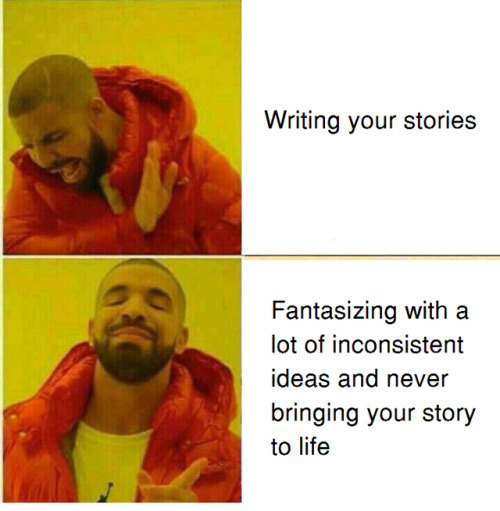


“How far would you go to protect your family? I’m a father, I’m a son, I’m a grandson, and I’m a husband. If someone were to hurt the women in my life and the law didn’t take care of it, what would I do? Pretty awful things.”
#Repost @meggatronia ・・・ So, disclaimer: I have know Jason for many years and this is my chair and Jason had my full permission to use it. I even had the Aquaman pop joystick on there instead of my usual WonderWoman one cos I had a feeling it would happen.
Feel free to share but please credit the footage to me with either my twitter or instagram @meggatronia credit for the chair’s costume goes to @zedstar_rocks #jasonmomoa #momoa #aquaman #wonderwoman #wheelchairfun #justiceleague #ozcomiccon #ozcc #occ #conventionlife @prideofgypsies
#Repost @kala_dacaptain ・・・ @prideofgypsies got skills.
prideofgypsies: Channeling @nusr_et To send this badass problem @normontesmvj set at the compound. Sprinkling unicorn dust on my new @soill FAT BUTT sloppers Fell. But I’ll send tomorrow Ps I will never travel without my @evolvusa agro’s. I left them in oz. I would have sent it@chris_sharma 😜😜😜😜
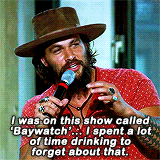
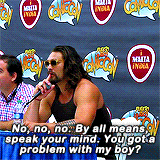
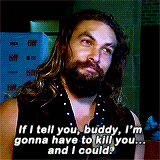
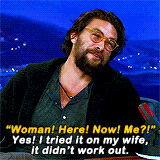
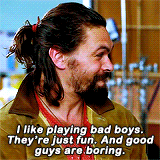


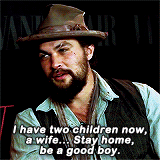

There’s not a lot of brown superheroes. And you know, I’m half-Polynesian and what that’s gonna represent to every Islander, to every brown kid that’s out there… it’s really cool what they’re doing with that, so that’s an honor to represent that.
@macfizzle @thiickreigns y'all I need help 😩😩😩
Like shit those damn sounds he’s makin, plus his hair and his arms and just like all of him 😩👅💦 also like the way it starts off zoomed in on his chest like just fuuuuck
Jason Momoa loves beer and throwing tomahawks.